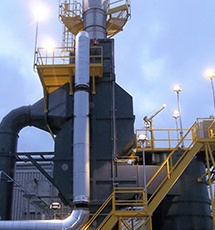As businesses approach the end of their fiscal year, the third and fourth quarter budgeting and tax planning process can become an extremely busy time for the financial teams tasked with preparing the relevant information for management review and approval. In addition to reconciling the current year’s earnings and expenses for IRS reporting and tax payments, they also need to collect all the necessary revenue and expense projections for the upcoming year from the organization’s various departments. This data is then compiled into detailed headcount, operating, and capital budgets. Once approved, these budgets will be used as guidelines for strategic initiatives and implementation timelines, and they will also be used to monitor company performance as a gauge in assessing the health of the business.
Businesses typically have each department identify their potential needs, such as: additional headcount (which, besides compensation and benefit expenses, includes employer tax expense) or additional Operating Expenses (OPx) (travel, administrative support, recruitment fees, and workspace requirements such as office space, desks, phone service, computers, and IT support).
Business also need to consider Capital Expenses (CAPx), which can include new equipment as well as improvements to existing equipment. In the ever-changing world of environmental rules and regulations, one of the capital expenses to be considered during the budget process is an air pollution control device. Whether you are looking to add energy conservation systems, planning for expansion, relocating, or simply modifying your current process, be sure to budget not only the dollars needed, but the time it takes to implement these changes.
Meeting air and water pollution control regulations when making production plant improvements can add time to the process during capital budget planning. One of our most frequently asked questions is, “How long does it take to build an oxidizer?” The answer depends on the client’s procurement process, as well as the complexity of the equipment and the location of the site.
For a better understanding of the installation process and the amount of time it takes, you can read our series of blogs that focused on a typical industrial process utilizing a standard thermal oxidizer, catalytic oxidizer, or regenerative thermal oxidizer. Since this is a complicated topic, we’ve separated it out into three steps:
How Long Does It Take to Build an Oxidizer? Part 1: The Client Buying Process
Building an Oxidizer, Part 2: Delivery and Installation
Building an Oxidizer, Part 3: Compliance Test Readiness
We hope that these blogs provide you with the information you need when budgeting both time and money for updates to your air pollution control systems, but if you have any questions, please don’t hesitate to contact us.








